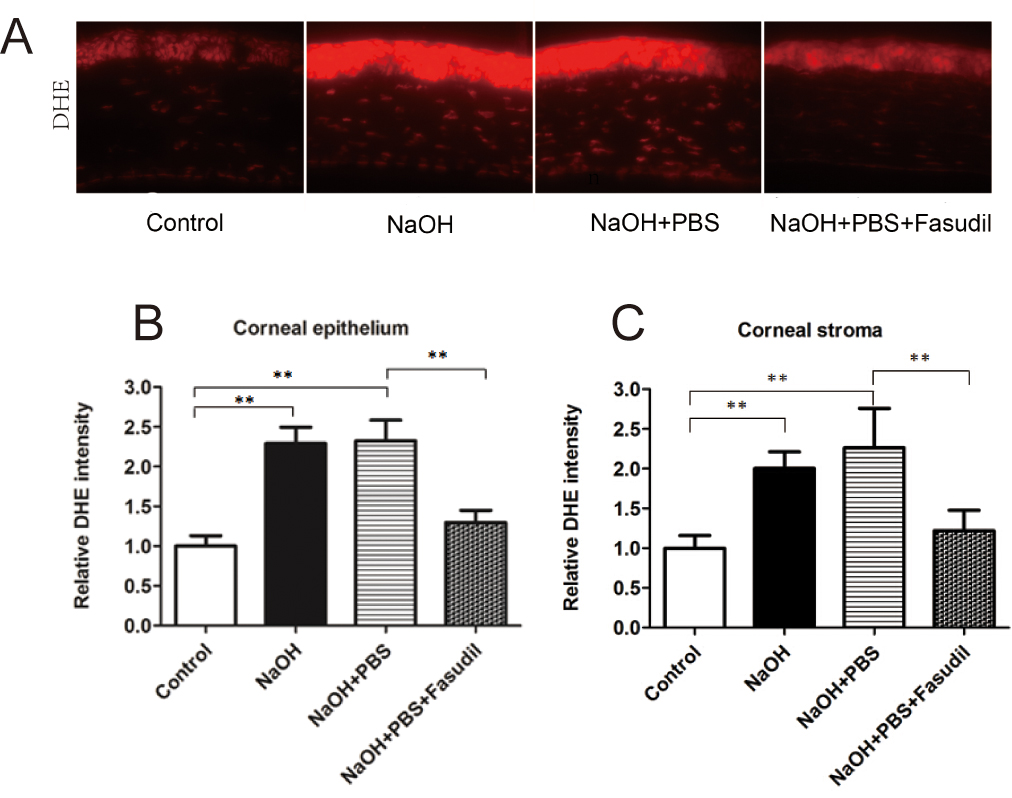Figure 3. The production of reactive oxygen species (ROS) in the burned murine corneas with and without fasudil treatment. A: To evaluate the effect of fasudil on the production of ROS in the cornea after alkali burns using the dihydroethidium (DHE)
assay, the intensity of fluorescence was scaled by integral optical density. B: In the corneal epithelium, the intensity of DHE fluorescence in the burned corneas after treatment with or without phosphate-buffered
saline (PBS) was significantly higher than that in the normal corneas (503.9±56.7 and 496.8±44.9 versus 216.9±28.6, respectively;
n=5/group, **p<0.01;), while it was significantly reduced after treatment with 100 μM fasudil eye drops (281.2±33.0; **p<0.01).
C: In the corneal stroma, the intensity of DHE fluorescence in the burned corneas after treatment with or without PBS was significantly
higher than that in the normal corneas (300.7±65.8 and 266.3±27.6 versus 132.9±21.1; n=5 per group, **p<0.01), while it was
significantly reduced after treatment with 100μM fasudil eye drops (162±34.1; **p<0.01).

 Figure 3 of
Zeng, Mol Vis 2015; 21:688-698.
Figure 3 of
Zeng, Mol Vis 2015; 21:688-698.  Figure 3 of
Zeng, Mol Vis 2015; 21:688-698.
Figure 3 of
Zeng, Mol Vis 2015; 21:688-698. 